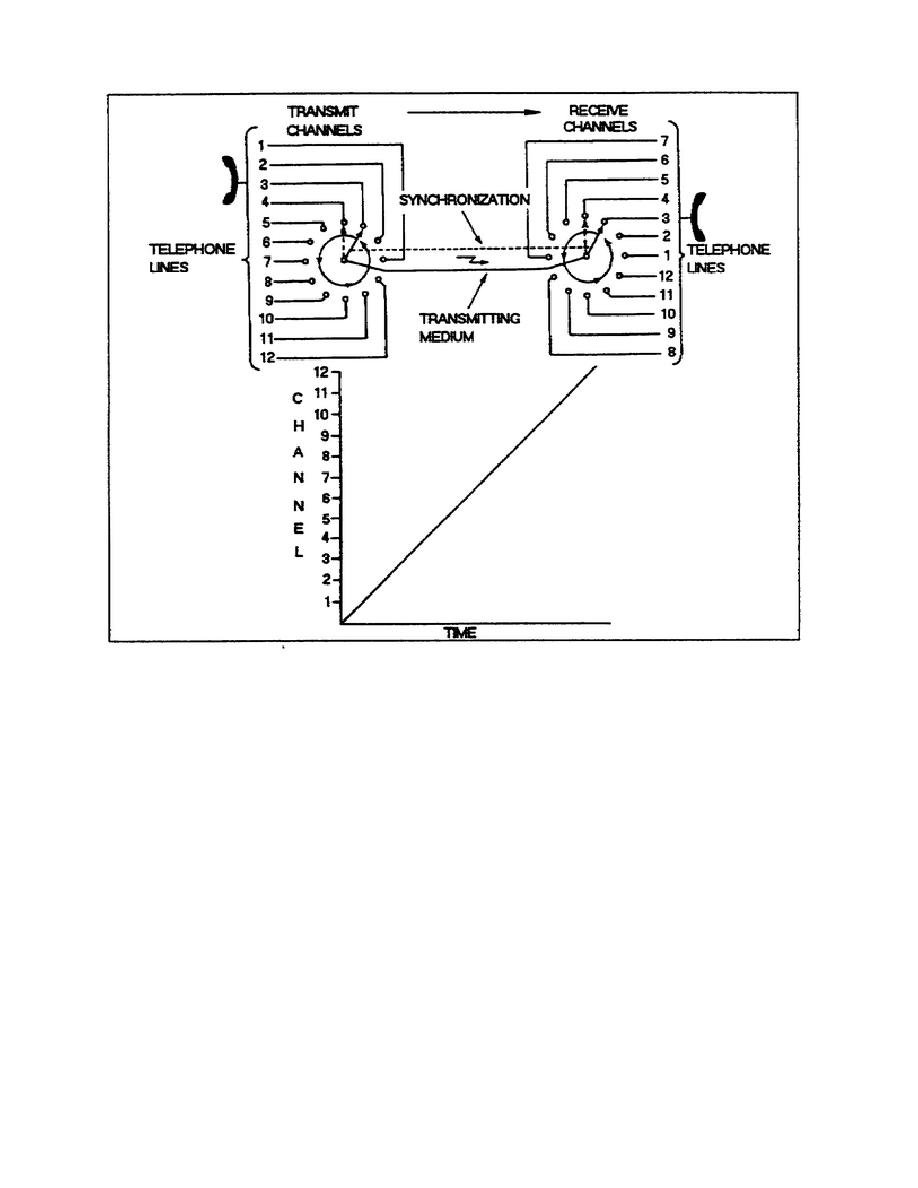
Figure 1-4.
12-channel TDM circuit
Used in conjunction with TDM is the principle of PCM.
PCM is a
communications technique that converts voice, data, or facsimile
signals into a series of digital pulse codes.
Each pulse code
represents signal amplitude at a particular instant and a series of
pulse codes represents a complete waveform.
Signals transmitted in
digital form are less susceptible to noise and distortion buildup.
Relay stations along the route regenerate these signals without
introducing additional distortion.
In the PCM process for voice transmission, digital codes represent
assigned standard amplitude levels (SALs). The sampling gate of the
transmitter samples the incoming voice waveform at a high rate, and
converts each sample to a pulse at the closest SAL.
These pulses
produce a pulse amplitude modulated (PAM) waveform.
The SAL pulses
are measured and converted to a binary pulse code for transmission.
The receiving station decodes the received binary pulse code and
reconstructs the PAM waveform.
1-6
SS0016



 Previous Page
Previous Page
